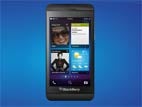It’s Friday again. Things seem to be slowing down at least a little bit. That’s what is supposed to happen in August, though it seemed for a while that it wouldn’t.
EAS Goes Wireless
The horrific and ongoing murder and kidnapping case in California is one of the broadest implementations of the expanded Wireless Emergency Alert (WEA) system.
Police believe that James Lee DiMaggio murdered a mother and her son and kidnapped a second child. The incident took place in the town of Boulevard, which is in San Diego County near the Mexican border.
Two years ago, the Federal Emergency Management Agency (FEMA) upgraded the Emergency Alert System to include wireless devices. The system, according to PCMag, generally is used for local weather emergencies and amber alerts. During the situation in California, a statewide alert was issued because DiMaggio was believed headed toward Mexico or Canada.
The system, according to the story, emits a “jarring” tone, which can be disconcerting to people who are unaware of the new service. The service has gotten use in many other areas, according to the Fox News affiliate in Milwaukee:
Emergency officials credit the new system for saving lives during the recent outbreak of tornadoes in Oklahoma. After the Boston Marathon bombing, officials issued wireless alerts to warn residents to shelter-in-place as the search for the bombers escalated. And in Minneapolis, a 15-year old girl who received an amber alert on her cell phone helped lead police to an 8 month-old baby that had been kidnapped.
News—Some Good and Some Bad—for BlackBerry
It was a mixed week for BlackBerry which, of course, is fighting tooth and nail to save itself. The bad news is that three executives—Doug Kozak, vice president of corporate IT operations; Carmine Arabia, senior vice president of global manufacturing and supply chain; and Graeme Whittington, vice president of service operations— are seeking greener pastures. CBC pointed out that the company laid off 250 employees from its new product testing facility late last month.
The good news is that the U.S. Department of Defense has given the Z10 and Q10 running on the BlackBerry Enterprise Server 10 (BES 10) the “Authority to Operate” on its network.
This Seems Like It Could Be Trouble
The Moto X phone, which is the first smartphone produced by Motorola since its acquisition by Google, offers an interesting twist, according to Datamation. Even a clever feature on a single phone generally is not worth too much attention—unless it seems likely to be used on other devices. This one does—and raises some concerns.
The “Trusted Devices” feature enables the phone to pair with other Bluetooth-enabled devices within range. The Moto X relies on these devices for the PIN that unlocks the phone:
Once paired, these other devices will replace your PIN on your device if they’re within range. So once you’ve connected every device in your home, car and office, it’s like your phone doesn’t have a PIN. But once the phone is outside the range of all other devices, the PIN is activated.
This sort of chained unlocking sounds very convenient. It also sounds, on the surface, like it could provide hackers with more entry points into the device. From a logical point of view, it seems likely that crackers will attempt to gain entry to the Moto X through its association with a paired device. The level of security is different on all devices, thus, it seems that a lowest common denominator situation could arise in which the safety of all the devices is only as good as the weakest.
Microsoft Describes Windows Phone Vulnerability
Microsoft’s Windows Phone got some positive news this week, mostly revolving around the fact that it no longer needs to be grouped with “other” when market share assessments are made.
Not all the news was good, however: InformationWeek reports a security alert for the system, which was revealed by Microsoft itself. It said that a weakness in a Wi-Fi authentication protocol used by Windows Phone 7.8 and 8 could let a rogue access point (AP) capture the target’s encrypted domain credentials. The credentials could be used to connect to a network resource and use it as if it is the legitimate AP.
Protecting Automobiles
And, finally, comes something that is sad but true: Even the connected electronics systems on automobiles need to be protected. The goal of the hackers is from the mundane, such as eavesdropping on calls executives make from the road. The aim, however, could be truly sadistic and terrifying, such as playing with the brakes.
Cisco and auto components manufacturer Continental are teaming up to confront the problem. The company’s approach is to treat the car as an enterprise (thus giving a whole new meaning to the phrase “mobile enterprise”). Here is how GigaOm reports the research:
Cisco’s contribution was essentially a software-based security gateway that manages user identity, filters content and guards against security threats, said Andreas Mai, Cisco director of product management for connected systems. The gateway also acts as an optimization tool, prioritizing certain types of traffic—for instance VoIP or video—and managing connections so that you’re not using high-bandwidth apps over expensive cellular networks, Mai said.
The two companies displayed their approach to this scary challenge last week in Traverse City, Michigan.



